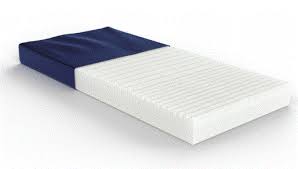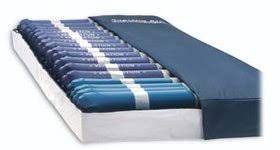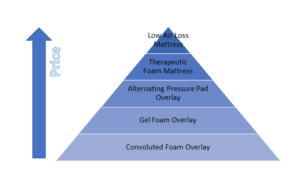Pressure Ulcers and Support Surfaces
Pressure ulcers may develop where your body is pressing against a surface – chair or mattress. Prolonged sitting or laying down can push on those places, such as heels, elbows, hips, buttocks, that are pressing down. Gravity is working against you and the circulation and skin in those areas is affected.
If you or someone you are caring for has pressure ulcers, then your focus will be on healing those sores and preventing further sores. There is some debate in the medical field about which products are the most effective on healing and preventing pressure ulcers.1
But that doesn’t mean you should address the problem. Pressure ulcers are very painful and can affect the physical and mental well-being of the person suffering with them. Quality of sleep and rest are diminished because of pain and discomfort. Mobility may be impaired which effects mental and physical activity. So what can be done?
Foam Mattresses and Overlays
Call it memory foam or visco or polyurethane. It supports your body by conforming to your shape. This molding to your body will minimize pressure points because you are more wholly supported. Your weight is distributed across the entire mattress or overlay, versus your weight being supported where the heavier or pointier bits meet the mattress surface. This is why many mattress manufacturers started adding toppers to their innerspring designs; the innerspring provides the structural support, and the topper conforms to your shape.
- Therapeutic foam mattresses rest on the bed frame/deck in place of an innerspring mattress
- Foam overlays can be placed on the top of any mattress and are often 3-4” thick
Air Mattress Options
Air mattresses or air toppers are often prescribed when someone has pressure ulcers that need healing; if you are prone to ulcers this may be a good preventive step too.
Low Air Loss Mattresses
The low air loss mattress takes the place of an innerspring or foam mattress. It has alternating cells inside the mattress that change the air pressure regularly. The program is controlled by a pump and settings can be selected for the duration of the cycle.
In addition, the low air loss mattress provides air flow to the surface which can help the skin to heal by keeping it dry. At Charron Medical, we recommend keeping a regular innerspring or foam mattress on hand, because the low air loss runs by electric pump. If the power goes out or the pump fails, you could be sleeping on limp plastic.
Alternating Pressure Pad (APP)
The APP is an overlay that can be placed on any mattress. Typically 2-1/2 to 3-inches thick when inflated, the APP is easy to install and use. The pump will inflate and deflate the cells. Each pump is different, so the cycles can vary. For example, the Drive APP uses a 5-minute cycle.
How to Choose
It is not easy to determine which product you need. First you must consider the level of pressure ulcers and sores already present. If you or the person you are caring for have no ulcers, then you can start with a foam overlay or foam mattress.
If you need to focus on healing ulcers that have already developed or are anticipating prolonged bed rest then an air mattress may be the better option. The APP is the most affordable and can be used on any mattress; if the power goes out you still have the underlying mattress. The low-air loss mattress will provide more healing in the long run but does cost more and you will need a backup in case the pump fails, or you lose power.
Charron Medical Equipment has several packages available for delivery and installation. Talk with our knowledgeable sales staff to see which combination of bed and support surface is right for you. Most beds are rated up to 450-pound capacity, however most mattresses have a 350-pound limit. Talking with a DME specialist will ensure you get the product you want delivered and installed by local professionals.
1McInnes, Jammali-Blasi, A., Bell-Syer, S., Dumville, J., & Cullum, N. (2012). Preventing pressure ulcers—Are pressure-redistributing support surfaces effective? A Cochrane systematic review and meta-analysis. International Journal of Nursing Studies, 49(3), 345–359. https://doi.org/10.1016/j.ijnurstu.2011.10.014








